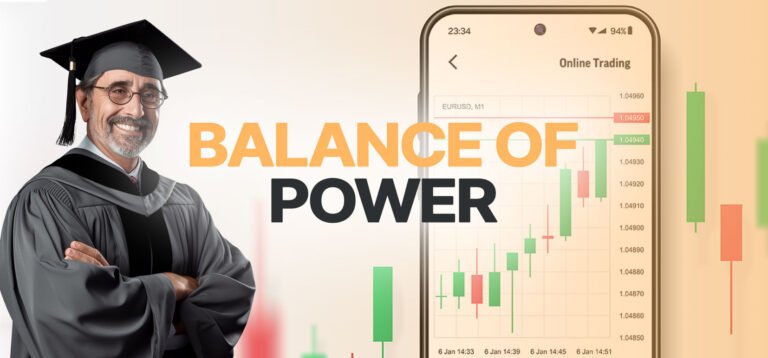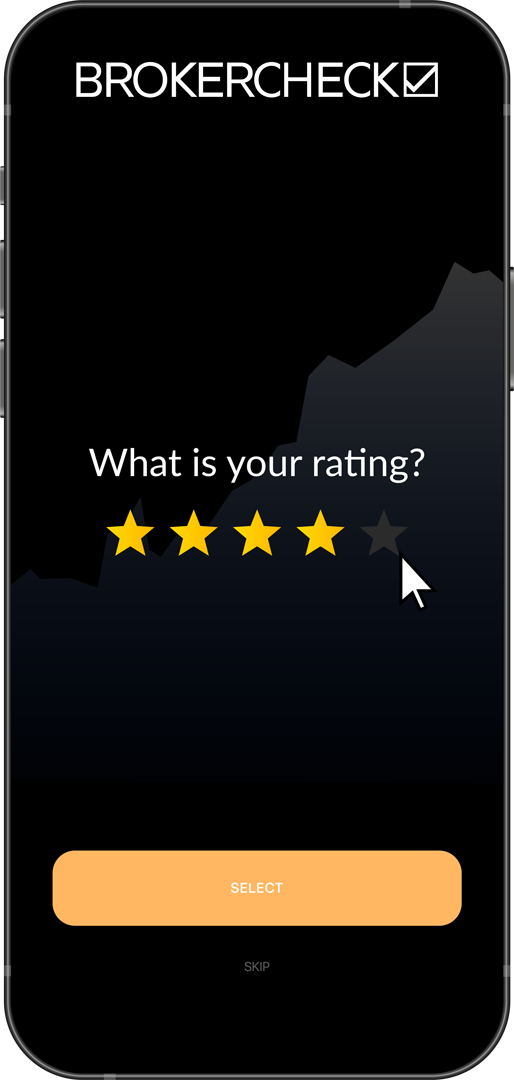1. Basics of Chande Momentum Oscillator
In the ever-evolving world of trading and investing, understanding the tools at your disposal is crucial for success. Among the many technical indicators out there, the Chande Momentum Oscillator (CMO) is one that deserves your attention. This unique tool, developed by Tushar Chande, is specifically designed to capture the momentum of a security’s price movement.
Think of momentum as the strength of the price movement. It’s the velocity at which the price of an asset increases or decreases for a set of returns. The CMO aims to identify whether a particular stock or other asset is overbought or oversold, based on its recent momentum. In essence, it gauges the direction and velocity of price movement, providing you with a snapshot of the market’s mood.
The CMO is calculated by subtracting the sum of all lower closes in a given period from the sum of all higher closes and then dividing the result by the total sum of all price movement during that period. The result ranges between -100 and +100, where a reading above +50 suggests the asset is overbought, and a reading below -50 indicates the asset is oversold.
Though it may sound complicated, it’s not. Consider a 20-day time frame for example. If the closes were higher on 12 days and lower on 8 days, the CMO will reflect that positive momentum. Conversely, if the closes were lower on 12 days and higher on 8, the CMO would reflect negative momentum.
With this indicator, you can identify potential entry and exit points for a trade. An overbought reading suggests the potential for a price drop, and an oversold reading could suggest a price increase. However, it’s essential to use the Chande Momentum Oscillator in conjunction with other indicators and not as the sole determinant of your trading decisions.
Remember, the CMO is just one piece of the puzzle. It can be an incredibly valuable tool when used correctly, helping you filter out market noise and focus on the trend. However, like every other technical indicator, it’s not foolproof and should be used as part of a well-rounded trading strategy.
In the end, understanding the Chande Momentum Oscillator can allow you to make more educated decisions and potentially increase your ability to profit in the market. Take the time to understand this tool, practice using it, and see how it can potentially enhance your trading strategy.
1.1. What is the Chande Momentum Oscillator?
The Chande Momentum Oscillator (CMO) is a technical analysis tool, devised by Tushar Chande. This oscillator is used to capture the momentum of a security, which can help traders understand the speed at which the price is changing. By doing so, it enables traders to forecast potential price reversals, offering valuable insight when deciding on buy or sell strategies.
The CMO ranges between -100 and +100, creating a zone that reflects overbought and oversold conditions. A general interpretation is that readings above +50 indicate overbought conditions, suggesting the price may soon correct downward, while readings below -50 signal oversold conditions, hinting at a potential upward correction.
However, like any technical analysis tool, the CMO should not be used in isolation. Instead, it works best when employed in conjunction with other indicators and tools to confirm trends and signals. For instance, traders might combine CMO with a moving average indicator to confirm an upward or downward trend.
The calculation of the CMO involves a somewhat complex formula. It measures the difference between the sum of all recent gains and the sum of all recent losses, then divides this by the sum of all price movement over the period. This results in a value between -100 and +100 that quantifies the momentum.
While this calculation may seem daunting, many modern trading platforms include the CMO in their suite of tools, providing real-time readings that traders can use to inform their strategies. While understanding the underlying mechanics can help interpret the readings more accurately, it’s not a necessity for using the indicator effectively.
It’s essential to remember that, like all technical analysis tools, the CMO is not foolproof. Prolonged periods of high or low momentum, for example, can skew the readings, leading to false signals. Furthermore, the CMO may produce contradictory signals in volatile markets. Therefore, traders should always use the CMO as part of a comprehensive trading strategy, incorporating other technical analysis methods to validate their findings.
For beginners, understanding and effectively using the CMO may take some practice. However, with time and experience, it can become a valuable part of any trader’s toolkit, helping to predict trend reversals and identify optimal trading opportunities.
In summary, the Chande Momentum Oscillator is a robust tool for gauging market momentum. It provides a versatile and adaptable method for traders to harness the power of momentum in their trading strategies. By understanding its strengths and weaknesses, traders of all levels can use the CMO to enhance their decision-making and potentially improve their trading outcomes.
1.2. How Does the Chande Momentum Oscillator Work?
The Chande Momentum Oscillator (CMO) is essentially a technical analysis tool designed to capture the speed of price movement. Named after developer Tushar Chande, this oscillator differentiates itself from other momentum indicators by focusing on the pure momentum of a security’s price rather than its relative positioning within a specific observation window.
To grasp the CMO’s workings, understanding its formula is paramount. The CMO is calculated as the difference between the sum of all higher closes and the sum of all lower closes over a defined period, divided by the sum of all price movements over the same period, and then multiplied by 100.
CMO = [(Sum of up movements – Sum of down movements) / (Sum of up movements + Sum of down movements)] * 100
This formula enables the oscillator to exhibit a direct reflection of the security’s momentum, where it oscillates between +100 (high bullish momentum) and -100 (high bearish momentum). Zero serves as the baseline for assessing the momentum’s direction. A positive value is indicative of upward price momentum, while a negative value symbolizes downward momentum.
In an application context, traders typically use the oscillator to identify overbought or oversold conditions. Generally, when the CMO rises above +50, it’s considered overbought, hinting at a potential forthcoming price pullback. Conversely, a value below -50 suggests an oversold condition, which could signify an imminent price rebound.
Furthermore, some traders use the CMO to spot divergence with the underlying security’s price. If the price reaches a new high, for instance, but the CMO fails to follow suit, it could indicate a weakening bullish momentum and possibly a trend reversal.
While the Chande Momentum Oscillator is a powerful tool, remember that it’s not foolproof. It’s always recommended to utilize it as part of a diversified analysis toolkit, in conjunction with other technical indicators and fundamental analysis. This approach helps mitigate the risks associated with false signals and provides a more comprehensive view of a security’s potential price movements.
2. Using the Chande Momentum Oscillator in Trading
The Chande Momentum Oscillator (CMO), developed by Tushar Chande, is a technical analysis tool that attempts to capture the momentum of a security. It oscillates between -100 and 100, providing a gauge for an asset’s trend, speed, and direction. This makes it a handy tool for beginner traders looking to bolster their market analysis.
To start, it’s important to understand that CMO is based on the difference between the sum of all recent higher closes and the sum of all recent lower closes, divided by the sum of all price movement over the same period. When prices close higher, the momentum is positive, whereas when prices close lower, the momentum is negative. This calculation is what puts the oscillator in motion, indicating the strength or weakness of a price trend.
Interpreting the Chande Momentum Oscillator is crucial. When CMO is above zero, this indicates that the market is on an upward trend, while a value below zero signifies a downward trend. A key factor to note is that the CMO doesn’t have absolute high and low ranges, meaning traders often look for divergences, crossovers, and overbought/oversold conditions.
A divergence occurs when the price of an asset and the CMO are moving in opposite directions. For instance, if the price is making higher highs, but the CMO is making lower highs, this is called a bearish divergence and can signify a potential price reversal. On the contrary, if the price is making lower lows but the CMO is making higher lows, this is a bullish divergence and may indicate a possible upward price reversal.
Crossovers are another important aspect to focus on. These occur when the CMO crosses above or below the zero line. When it moves from below to above zero, it’s considered a bullish signal, suggesting it might be a good time to buy. Conversely, when the CMO moves from above to below zero, it’s interpreted as a bearish signal and might be an ideal time to sell.
As with many other oscillators, the CMO can also be used to identify overbought or oversold conditions. Traditionally, readings above +50 are considered overbought, while readings below -50 are considered oversold. However, these levels are not fixed and can be adjusted based on market conditions and the characteristics of the individual security.
To provide a more comprehensive analysis, the CMO is often used in conjunction with other technical analysis tools and indicators. This can help to confirm the signals provided by the CMO and improve the overall accuracy of your trading decisions. However, as with all trading strategies, there’s no guarantee for success, so it’s crucial to practice good risk management and always use stop losses.
2.1. Reading Chande Momentum Oscillator Charts
When it comes to analyzing market trends and momentum, the Chande Momentum Oscillator (CMO) stands out as a powerful tool. Developed by Tushar Chande, this technical analysis instrument measures the momentum on a scale of -100 to 100. The central line at 0 divides the positive and negative territories representing a bullish and bearish market respectively.
To use the CMO effectively, it is crucial to understand how to read its charts. The principal rule is that when the oscillator is above 0, it indicates a bullish market, and when it is below 0, it is a bearish market. It’s about more than just this simple interpretation though; extreme values also play a critical role. A value above 50 suggests overbought conditions, while a value below -50 indicates oversold conditions. Traders can consider these extremes as a signal of potential market reversal.
Another vital point to note is the crossing of the central line. When the CMO crosses above the 0 line, it is a bullish signal, and a cross below the 0 line is a bearish signal. This crossover can be an indication for traders to enter or exit a trade.
Some traders also use divergence as a signal for potential price reversals. Divergence occurs when the price of an asset and the CMO are moving in opposite directions. If the price is making higher highs while the CMO is making lower highs, it is called a bearish divergence. Conversely, if the price is making lower lows while the CMO is making higher lows, it is known as a bullish divergence.
In addition, traders often apply a 9-period moving average to the CMO line to generate trading signals. A signal to buy is generated when the CMO line crosses above its moving average, and a sell signal when it crosses below.
Having said that, it should be noted that like any other technical tool, the CMO is not foolproof. Traders should always use it in conjunction with other indicators and analysis tools to increase their chances of trading success. It’s also essential to practice good risk management and not rely solely on any single indicator.
2.2. Chande Momentum Oscillator Trading Strategies
The Chande Momentum Oscillator (CMO) is a powerful tool utilized by traders to identify potential market reversals and generate trade signals. It’s a technical analysis tool that measures the momentum of price changes, helping investors understand the speed at a security’s price is moving. This oscillator ranges between -100 and +100, making it easy for beginners to comprehend.
One popular trading strategy using the CMO is to look for overbought or oversold conditions. When the CMO reaches or goes above +50, the security is considered overbought, and it may be a good time to sell. Conversely, when the CMO reaches or goes below -50, the security is considered oversold, indicating that it may be a good time to buy. This strategy is quite straightforward and can be very effective when used properly. However, like all trading strategies, it isn’t flawless and should be used in conjunction with other technical indicators to confirm signals.
Another effective strategy is trading on the basis of CMO divergences. A divergence occurs when the price of a security and the CMO are moving in opposite directions. A bullish divergence is when the price is making lower lows while the CMO is making higher lows. This could indicate that the downward momentum is weakening and that a bullish reversal could be on the horizon. On the other hand, a bearish divergence is when the price is making higher highs while the CMO is making lower highs. This signals that the upward momentum is slowing down and a bearish reversal could be imminent.
The Zero Line Cross strategy is another way to use the CMO for trading. This strategy involves initiating a buy order when the CMO crosses above the zero line, signaling a possible start of an upward trend. Similarly, a selling opportunity is presented when the CMO crosses below the zero line, indicating a potential downward trend.
Finally, the CMO Swing strategy uses the extreme readings of the oscillator to identify potential swing trading opportunities. When the CMO is above +50, it shows strong bullish momentum, and traders may enter a long position. Conversely, when the CMO is below -50, it indicates strong bearish momentum, and traders may consider selling or shorting the security.
Remember, while these strategies can be beneficial, they should not be used in isolation. It’s essential to consider other aspects of technical analysis, such as support and resistance levels, chart patterns, and fundamental data, to gain a more comprehensive view of the market. Trading always involves risk, and these strategies do not guarantee profits. It’s crucial to manage your risk properly and make informed trading decisions.
3. Risks and Limitations of Chande Momentum Oscillator
The Chande Momentum Oscillator (CMO) is a technical analysis tool used to gauge market momentum, primarily in the realm of stock and forex trading. However, as with any financial tool, it comes with its fair share of risks and limitations that traders need to be aware of. One of the primary risks associated with the CMO is its susceptibility to generate false signals, especially in volatile markets. Given that the CMO oscillates between -100 and +100, a reading above 50 typically indicates strong upward momentum while a reading below -50 suggests strong downward momentum. Yet, during volatile periods, these readings can fluctuate rapidly — potentially leading traders to make impulsive, and often incorrect, trading decisions.
Another notable limitation of the CMO is its inability to provide information about price direction. While the CMO can effectively measure the speed of price changes, it offers no insight into the actual direction of these changes, whether upward or downward. This means that traders often need to use the CMO in conjunction with other indicators or tools — such as Moving Averages or Bollinger Bands — to accurately gauge market trends and make more informed trading decisions.
Furthermore, while the CMO can help traders identify overbought and oversold conditions, these signals can be misleading in strong trending markets. For instance, if a particular security is in a strong bullish trend, the CMO may remain in overbought territory for an extended period of time, leading traders to prematurely anticipate a trend reversal that may not materialize. Conversely, in a bearish trend, the CMO may remain in an oversold condition for a prolonged period, which could cause traders to miss out on potential trading opportunities.
Lastly, it’s worth noting that the CMO, like any oscillator, is typically more effective in sideways or non-trending markets. In trending markets, oscillators including the CMO can remain in overbought or oversold conditions for extended periods, which can lead to multiple false signals. Thus, it is not advisable to use the CMO as a standalone indicator, especially in trending markets.
So, while the Chande Momentum Oscillator can provide valuable insights into market momentum, it’s essential to understand its inherent risks and limitations, and to use it judiciously and in conjunction with other technical analysis tools. By doing so, traders and investors can better navigate the market’s ebbs and flows, and potentially enhance their trading performance.
3.1. False Signals
In the world of trading and investing, understanding the nuances of technical indicators is crucial in order to make sound decisions. The Chande Momentum Oscillator (CMO) is one such tool that traders often use to gauge market momentum and to potentially spot changes in trends. However, like all indicators, the CMO isn’t foolproof and can sometimes send out false signals.
False signals are instances when the indicator suggests a particular price movement, but the opposite occurs. They’re an inherent part of trading, and the fact that CMO can produce false signals isn’t a flaw or drawback, but rather a characteristic that traders must account for. Recognizing these false signals and understanding how to manage them is crucial for effective trading.
One way to mitigate the risk of false signals is by combining the CMO with other indicators or tools. For instance, some traders use trend-lines, moving averages, or other momentum oscillators in conjunction with the CMO to confirm signals. This technique, known as divergence, involves comparing the CMO’s peaks and valleys with the price’s peaks and valleys. If the CMO reaches a new high while the price does not, a bearish divergence is indicated – suggesting that bullish momentum is waning. On the other hand, if the CMO reaches a new low while the price does not, a bullish divergence is indicated – suggesting that bearish momentum is weakening.
Another method to deal with false signals is by adjusting the time period used in the CMO’s calculation. The default setting is typically 14 periods, but traders can increase this to reduce sensitivity and potentially decrease the number of false signals, or decrease it to increase sensitivity and potentially increase the number of signals. However, it’s worth noting that adjusting the period involves a trade-off between sensitivity and reliability.
It’s also important to know that the CMO is a bounded oscillator, meaning it moves between a defined range of -100 and +100. A reading above +50 suggests strong upward momentum – potentially a buying opportunity. Conversely, a reading below -50 indicates strong downward momentum and possibly a selling opportunity. However, these are not hard and fast rules. Traders should be aware that false signals can occur, and as such, should not rely on the CMO alone to make trading decisions.
Lastly, practice and experience are key in handling false signals. Novice traders should consider paper trading or backtesting strategies before risking real capital. Over time, traders will develop a feel for how the CMO behaves in different market conditions, helping to improve their ability to distinguish between true and false signals.
In conclusion, while the Chande Momentum Oscillator can provide valuable insights into market momentum and potential trend changes, it’s not infallible and can occasionally send out false signals. By understanding these nuances, combining the CMO with other tools, adjusting its settings, and gaining experience, traders can reduce the impact of false signals and improve their overall trading strategy.
3.2. Market Volatility
Understanding the nature and impact of market volatility is of paramount importance for traders and investors. Volatility is a statistical measure of the dispersion of returns for a given security or market index, and it can greatly impact your trading strategies. Increased market volatility often leads to wider price swings, which can either bring substantial profit opportunities or potential loss risks.
One of the key tools to navigate through volatile markets is the “Chande Momentum Oscillator (CMO)”. The CMO is a technical analysis tool used to capture the momentum of a security, thereby helping you to identify overbought or oversold conditions. By understanding how the momentum of a security changes, you can better predict price movements and adjust your positions accordingly.
The Chande Momentum Oscillator is unique in its calculation as it uses both up and down days in its numerator, highlighting both gains and losses. This helps traders to get a more comprehensive view of a security’s momentum. The CMO ranges from -100 to 100 with 0 as the middle line, with high values indicating overbought conditions and low values indicating oversold conditions.
How does this apply to market volatility? During volatile markets, securities tend to have wider price swings. If the Chande Momentum Oscillator is near its extreme values (either -100 or 100), it suggests that the security is in overbought or oversold condition, respectively. Such conditions often precede price reversals, providing trading opportunities.
However, it’s essential to be cautious. High volatility may cause the price to continue in its direction despite reaching extreme values on the CMO. This is known as a ‘divergence’. A divergence occurs when the price continues to rise (or fall) while the CMO begins to drop (or rise), indicating a potential reversal in the near future. Spotting and correctly interpreting divergences can be a powerful tool during volatile markets.
While the Chande Momentum Oscillator can help you navigate market volatility, it’s important to use it in conjunction with other indicators and tools. It can provide valuable buy or sell signals during volatile market conditions, but it doesn’t provide information about trend direction or price targets. Hence, supplementing it with other tools like Moving Averages or Bollinger Bands can provide a more complete trading strategy.
In conclusion, understanding market volatility and effectively using tools like the Chande Momentum Oscillator can equip you with the skills to navigate volatile markets. Remember, trading in volatile markets comes with increased risk, so always ensure you have a solid risk management strategy in place.
3.3. Importance of Confirmation in Trading
Understanding the role of confirmation in trading is key to a trader’s success. In the world of technical analysis, indicators such as the Chande Momentum Oscillator (CMO) play a critical role as they provide signals for potential market direction. However, these signals are not foolproof. That’s why it’s crucial to use a concept known as confirmation, a technique by which traders check a trading signal from one indicator against another to verify its reliability.
To illustrate, let’s use the CMO. This oscillator fluctuates between -100 and 100, providing overbought and oversold signals. When the CMO crosses above the zero line, it’s a bullish signal, indicating it might be a good time to buy. Conversely, a crossing below the line suggests a bearish forecast, potentially signaling a selling opportunity. However, to navigate the risk that comes with false signals, traders will look for confirmation from another indicator before making a move.
Confirmation can come from different sources. One of the most common methods is to use another technical analysis tool like the Relative Strength Index (RSI) or the Stochastic Oscillator. If these indicators reflect the same market direction as the CMO, it provides a stronger case for the action to take. For example, if the CMO crosses above zero indicating bullish momentum, a trader might wait until the RSI also shows the market is not overbought. This cross-verification process ensures that you’re not merely reacting to a false positive from a single indicator.
Volume is another key factor used in confirmation. An increase in volume often validates a trend. If the CMO gives a bullish signal and there’s an increase in volume, this strengthens the case for a potential upward price movement.
Candlestick patterns can also provide confirmation. For instance, if you get a bullish signal from the CMO, you might look for a bullish candlestick pattern such as a hammer or a bullish engulfing pattern to confirm the signal.
The significance of confirmation in trading cannot be stressed enough. It’s the difference between jumping into trades based on a single, possibly deceptive indicator signal, and making more informed decisions based on corroborative evidence from multiple sources. Remember, while no strategy can entirely eliminate risk, a prudent trader always seeks ways to mitigate it, and using confirmation is a sound approach to achieve this.
4. Practical Tips for Beginner Traders
Understanding the Chande Momentum Oscillator (CMO) is the first step towards making informed trading decisions. This technical analysis tool, developed by Tushar Chande, is designed to capture the momentum of a security. The CMO oscillates above and below a Zero Line, reflecting the direction of the market trend. Positive values suggest upward momentum, while negative values indicate a downward trend. The oscillator’s range-bound nature makes it a valuable tool for identifying overbought and oversold conditions. Generally, a reading above +50 is considered overbought, suggesting potential reversal to the downside, while a reading below -50 is considered oversold, indicating potential upside reversal.
Tip 1: Understand the Market Conditions. Before utilizing the CMO, grasp the overall market conditions. The oscillator performs best in trending markets, either up or down. In range-bound markets, momentum oscillators can produce misleading signals, leading to potential losses.
Tip 2: Combine with Other Indicators. To increase your trading accuracy, use the CMO alongside other technical analysis tools. For instance, you could use moving averages to confirm the trend direction indicated by the CMO. Combining indicators can strengthen the signals produced and reduce the risk of false signals.
Tip 3: Practice Patience. Wait for the CMO to cross the Zero Line before entering a trade. The Zero Line cross is a solid confirmation of a trend change. It’s vital to get confirmation from the CMO or another indicator before making a trading decision to reduce the risk of false signals.
Tip 4: Use Stop-Loss Orders. When trading with the CMO, it’s crucial to manage your risk by setting stop-loss orders. This limits potential losses if the market moves against your position. Remember, no indicator, including the CMO, is right 100% of the time. Therefore, effective risk management strategies are vital to protect your trading capital.
The Chande Momentum Oscillator is a powerful tool for identifying potential trading opportunities. However, it’s crucial to understand its limitations and use it as part of a comprehensive trading strategy. It’s also important to remember that past performance is not indicative of future results, and all trading involves risk. Stay patient, use stop-loss orders, and remain disciplined to improve your trading outcomes.
4.1. Importance of Practice
In the world of trading and investing, nothing can replace the value of practice, especially when it comes to understanding and utilizing technical indicators like the Chande Momentum Oscillator (CMO). The CMO is a powerful tool that can provide valuable insights into market trends and potential reversals. However, interpreting its signals can be complex, particularly for novice traders and investors.
Learning to read the CMO involves understanding its structure and the meaning behind its movements. When the CMO line crosses above the zero line, this typically indicates bullish momentum and might be a signal to buy. Conversely, when it crosses below the zero line, this suggests bearish momentum and might be a signal to sell. However, these signals are not foolproof and can sometimes lead to false positives. Therefore, it’s crucial to use the CMO in conjunction with other technical indicators and analysis methods to confirm its signals.
Practicing using the CMO involves applying it to real-world scenarios, ideally in a risk-free environment such as a demo trading account. This allows you to gain hands-on experience with the CMO, learning how it reacts to different market conditions and how it can complement your overall trading strategy. By experimenting with different time frames and market conditions, you can get a better feel for how the CMO can be a useful tool in your trading arsenal.
Recording and reviewing your trades is another important aspect of practice. By doing so, you can identify patterns and trends in your trading, pinpointing what works and what doesn’t. Over time, this can help increase your trading accuracy and reduce the frequency of unprofitable trades.
While learning to use the CMO, or any technical indicator for that matter, may seem daunting at first, with consistent practice and review, it can become a valuable part of your trading and investing strategy. Just remember, there’s no such thing as overnight success in the trading world. It takes time, patience, and a lot of practice to master the art of trading. And while the journey may be challenging, the rewards can be incredibly satisfying, both personally and financially.
4.2. Using Demo Accounts
As an aspiring trader, you’ll find valuable opportunities in practice trading, especially when it comes to technical indicators such as the Chande Momentum Oscillator (CMO). To fully understand how the CMO works and how it can provide insights into market conditions, it’s beneficial to use a demo account. A demo account allows you to trade with virtual money, mitigating the risk of losing real funds while learning the ropes.
Demo accounts mimic real market conditions, allowing new traders to understand the nuances of trading, including testing different strategies, examining various technical indicators, and getting acquainted with the trading platform. Using a demo account to practice trading with the CMO, you can identify overbought and oversold market conditions, providing a clear window into potential trading opportunities. This oscillator’s main strength lies in its ability to reveal the speed of price movement, which becomes a crucial factor in making informed trading decisions.
Testing the Chande Momentum Oscillator on a demo account can help you gauge its effectiveness in different market conditions. Its sensitivity to market movements can be adjusted, offering flexibility to match your trading style. By tweaking the look-back period or using it in conjunction with other indicators, you can enhance its accuracy in signaling potential buy or sell opportunities.
Perhaps the most valuable part of using a demo account is the learning that comes with making mistakes. When the CMO provides a signal that doesn’t result in a profitable trade, you can analyze the market conditions and your actions to understand what went wrong. This way, when you transition to trading with real money, you are better prepared to avoid such mistakes.
Remember, though, that while demo trading is a fantastic learning tool, it cannot completely replicate the emotional and psychological aspects of risking real money. Once you have developed a solid understanding of the Chande Momentum Oscillator and feel confident in your ability to apply it to trading decisions, gradually transitioning to a live account could be your next step.
In conclusion, using a demo account to practice trading with the CMO can be a valuable part of your learning process as a new trader. It allows you to understand the functionality of this technical indicator, develop and test trading strategies, and learn from your mistakes without risking actual capital.
4.3. Continuous Learning and Adapting
As a trader or investor, it’s critical to understand that the markets are dynamic environments that require a consistent commitment to education and adjustment to ever-changing situations. The application of the Chande Momentum Oscillator (CMO) is no exception to this rule. This tool, named after its creator Tushar Chande, is an effective indicator that measures momentum on a -100 to +100 scale, helpfully indicating overbought and oversold conditions.
However, the key to successfully leveraging the CMO lies in constantly learning and adapting your strategies. The CMO is not a standalone indicator; it works best when used in conjunction with other technical indicators such as moving averages, trend lines, and volume measures. The value of the CMO swings around a zero line and often a 9-day EMA of the CMO is plotted alongside as a signal line to trigger trading signals. Hence, it is essential to understand how to integrate these various indicators into your trading approach effectively.
In the world of trading, knowledge is power. As such, every trader should strive to continually educate themselves about the underlying mathematical formulas that drive the CMO and other indicators. This understanding can help you interpret the data these tools provide more accurately and make more informed trading decisions. For example, knowing that the CMO is calculated by subtracting the sum of all lower closes over a specified period from the sum of all higher closes and then dividing by the sum of all upward and downward movements can help you understand why the oscillator is behaving in a certain way.
Adaptability is just as important as knowledge. Market conditions can shift abruptly due to a wide array of factors, from sudden economic changes to shifts in investor sentiment. A strategy that worked one day may not work the next. Therefore, traders should always be ready to adjust their strategies and re-calibrate their use of the CMO as market conditions evolve. For instance, during periods of high volatility, the CMO might swing more dramatically, and understanding this can help you adjust your interpretation of overbought or oversold conditions.
Lastly, it’s crucial to remember that continuous learning and adapting is not just about understanding the markets better. It also involves learning from your trading experiences, successes, and failures. Every trade is a learning opportunity, whether it resulted in a profit or a loss. Take the time to review your trades, assess your decision-making process, and identify areas for improvement. This will help you refine your use of the CMO and other trading tools, better understand your own trading habits, and ultimately, become a more successful trader.












